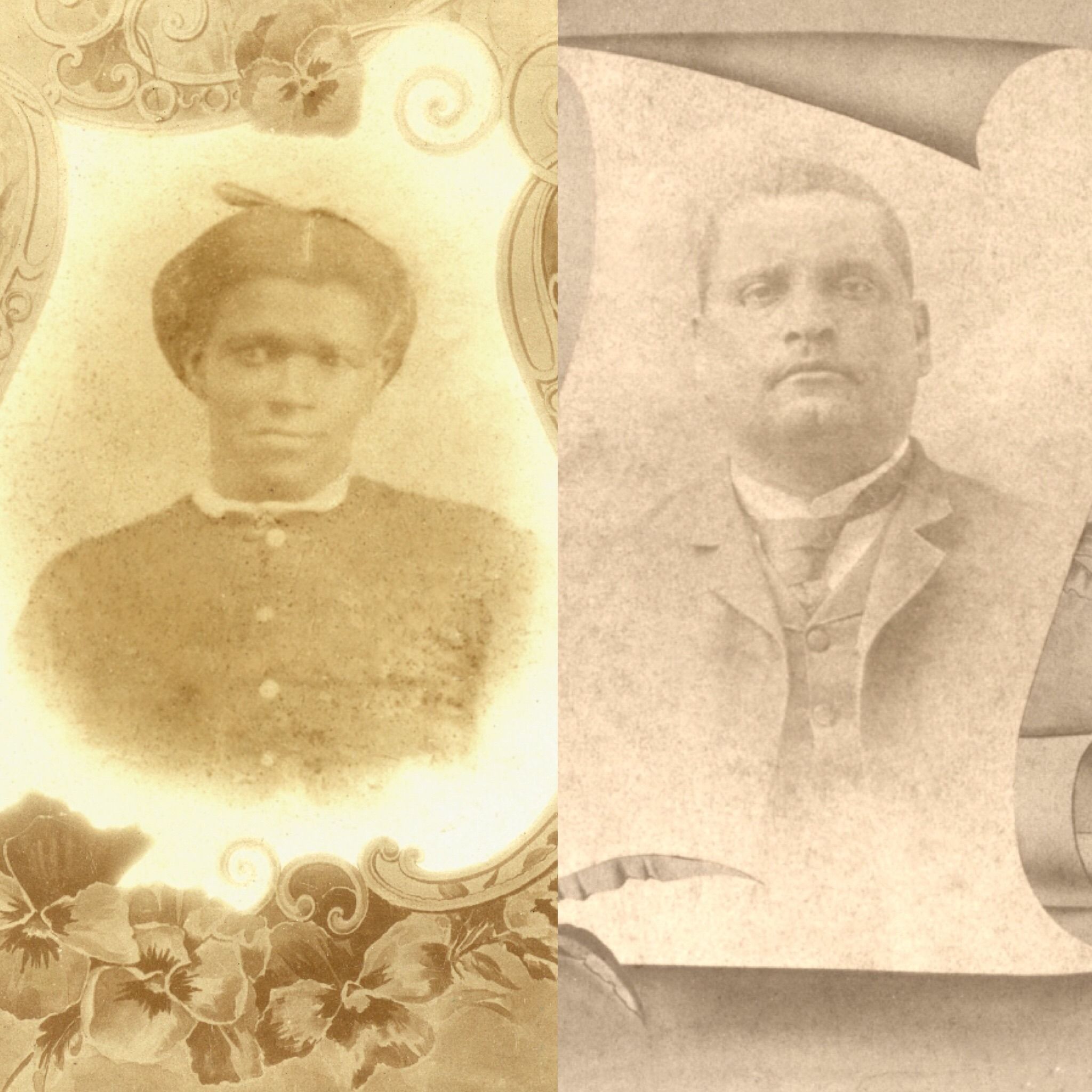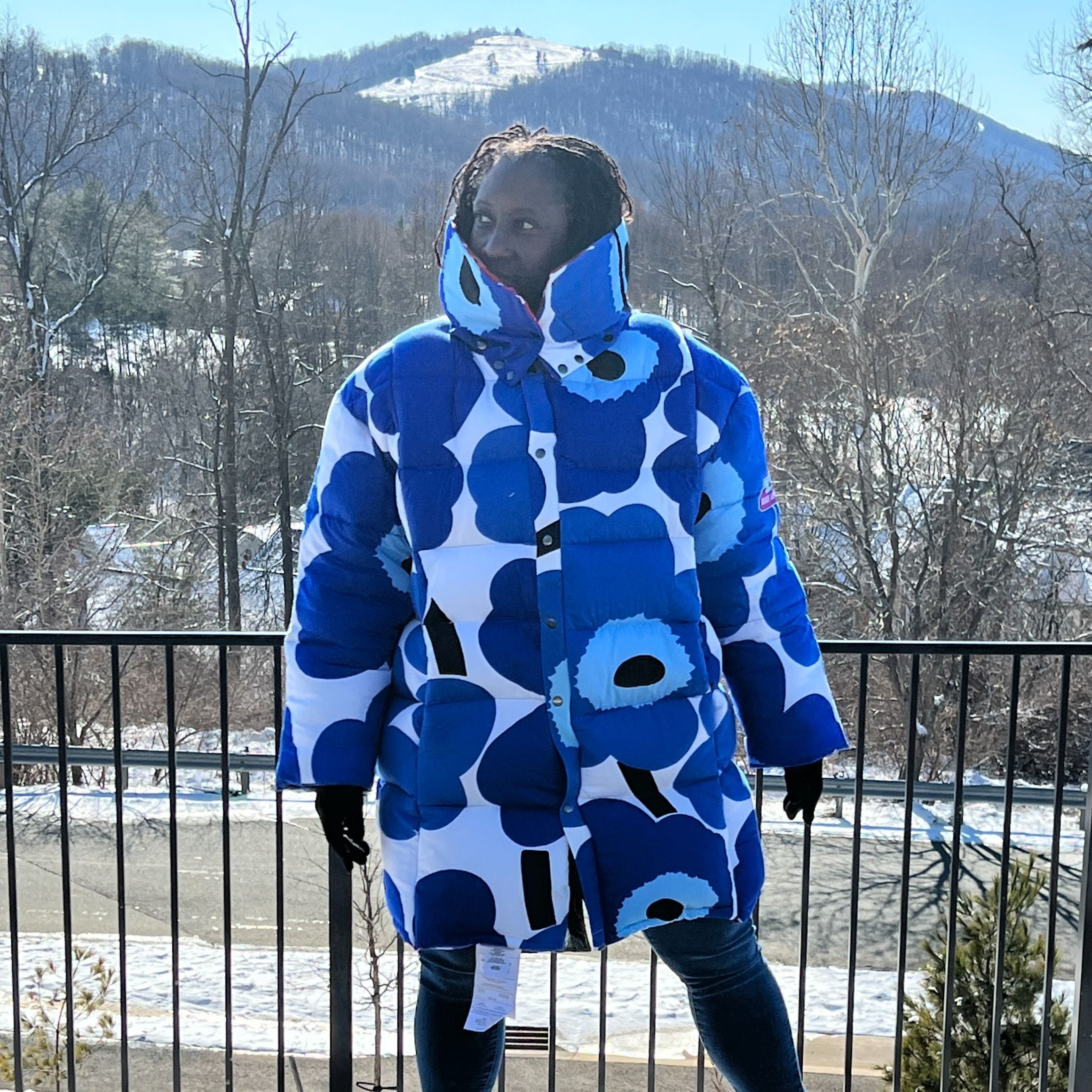LONDON REIGN discount code: STITCHPLEASE35 for 35% off the London Reign dress pattern. Not compatible with any other offer. Valid until October 1, 2023. One purchase per customer.
Find Miss J Sews at her wonderful website!
Sign up for the Black Women Stitch quarterly newsletter!
Check out our merch here
Leave a BACKSTITCH message and tell us about your favorite episode.
Join the Black Women Stitch Patreon
Janet Hensell
Janet Hensell is a blogger who shares her handmade wardrobe and encourages others to sew and design their own style. She is best known as Miss J Sews, offering tips for setting trends and relying less on fast fashion. Her mom taught her to sew and they started off on dolly, but when she realized that she could make clothes that actually fit instead of always having to rely on shops, that was amazing.
Lisa Woolfork
Lisa Woolfork is an associate professor of English specializing in African American literature and culture. Her teaching and research explore Black women writers, Black identity, trauma theory, and American slavery. She is the founder of Black Women Stitch, the sewing group where Black lives matter. She is also the host/producer of Stitch Please, a weekly audio podcast that centers on Black women, girls, and femmes in sewing. In the summer of 2017, she actively resisted the white supremacist marches in her community, Charlottesville, Virginia. The city became a symbol of lethal resurging white supremacist violence. She remains active in a variety of university and community initiatives, including the Community Engaged Scholars program. She believes in the power of creative liberation.
Insights from this episode:
- Extending the life of a garment to last beyond the trends
- Pattern cutting: what it is, and making something fit well from the inside out
- How Janet’s fashion came to be the talk of her fellow jury members
- The inspiration behind the London Reign pattern, from the design to the name
- The importance of crafting as self-care
Quotes from the show:
- “I’m kind of bootylicious in my figure, and they don’t cater for that in the shops. But I can cater to myself if I sew, and that became the key thing. The feeling of making a thing that fits is unmatched.” – Janet Hensell, Stitch Please, Episode #191
- “It really is this vicious circle of consumption and discarding. Buy it, wear it, throw it away. And this is another thing that sewing can reduce. It is a form of sustainability because the pieces that you end up making, you tend to hold onto them longer.” – Lisa Woolfork, Stitch Please, Episode #191
- “Crafting is self-care. Whether you’re a carpenter, a seamstress, a dancer, whatever you do for your mental health and fun, it is self-care. For me that was sewing.” – Janet Hensell, Stitch Please, Episode #191
- “Know what fits your lifestyle and fits your body. And when I say fit, know to fit your garments to fit you. Even if the garment is made from a cheaper fabric, once it fits you, people won’t even notice.” – Janet Hensell, Stitch Please, Episode #191
Resources Mentioned:
- Stitch Please Podcast episode: Pattern Cutting Deconstructed with Monisola Omotoso
- London Reign pattern and discount code: STITCHPLEASE35 valid on the London Reign dress pattern for 35% off. Not compatible with any other offer. Valid till October 1, 2023. One purchase per customer.
Stay Connected:
YouTube: Black Women Stitch
Instagram: Black Women Stitch
Facebook: Stitch Please Podcast
Lisa Woolfork
Instagram: Lisa Woolfork
Twitter: Lisa Woolfork
Janet Hensell
Website: Miss J Sews
Instagram: Miss J Sews
Facebook: Miss J Sews
Twitter: Miss J Sews
Pinterest: Miss J Sews
TikTok: Miss J Sews
Join the Miss J Sews Community
Subscribe to our podcast + download each episode on Stitcher, Apple Podcasts, and Spotify.
This episode was produced and managed by Podcast Laundry.
Sign up for the Black Women Stitch quarterly newsletter
Check out our merch here
Leave a BACKSTITCH message and tell us about your favorite episode.
Join the Black Women Stitch Patreon
Check out our Amazon Store
Stay Connected:
YouTube: Black Women Stitch
Instagram: Black Women Stitch
Facebook: Stitch Please Podcast



